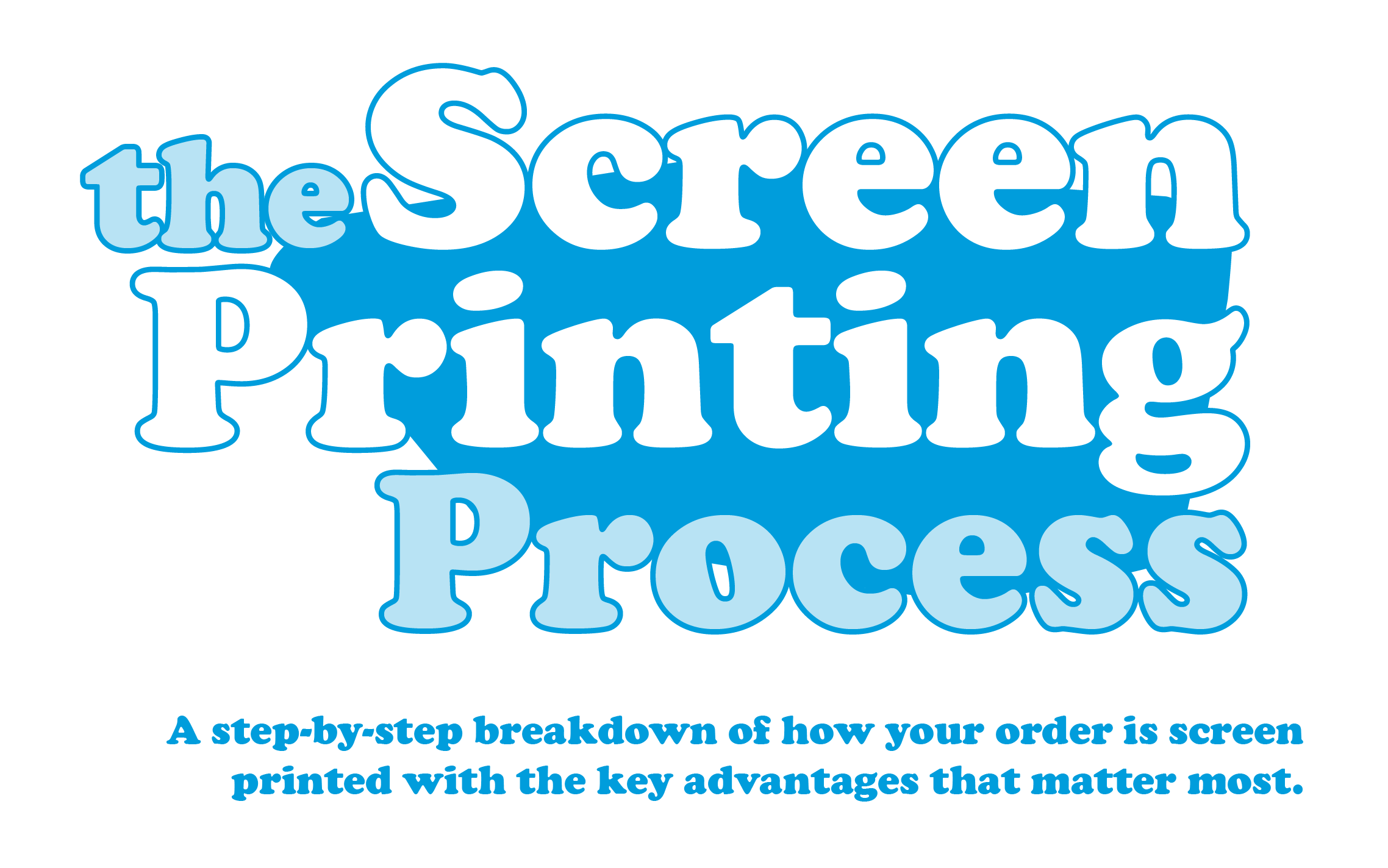After posting our previous article outlining the entire screen printing process in pretty serious detail, we figured we needed a good way to boil down the key points. So, we put together an infographic for those a little short on time and attention so everyone is sure to get the important details.

We’ll include an easy-to-read outline of all the information from the above graphic:
The Screen Printing Process
A step-by-step breakdown of how your order is screen printing with the key advantages that matter most.
- Artwork prep – Each Screen printed design starts on the computer where we separate colors from each other and prepare a new document with our printing information.
- Screen making – Each color is first transferred to clear film and then burned with UV light to create a stencil on individual screens coated with emulsion.
- Ink mixing – Ink is prepared by mixing the appropriate color along with any additives to make the final design print and feel great.
- Printing – Screens and squeegees are all loaded into a printing press where we push ink through each stencil and onto your t-shirt to recreate the original design.
- Clean up – Screens are reclaimed, stripped of their ink and emulsion, and everything is prepared to start the whole process over again.
Advantages of the screen printing process
- More apparel options – The versatility of screen printing means that we can offer more apparel options. Whether it’s cotton, polyester, dark, or light, we can make any style and fabric work.
- Cost effective for large quantities – Despite the lengthy set up, screen printing presses run so fast that we can offer discounts for larger quantities. The more your order, the cheaper each t-shirt gets.
- Color matching – Preparing ink for each and every design allows us to match specific colors when it matters. With the right inks, we can print even the most eye-popping designs.
Follow us on Instagram to keep up with new, helpful content about our t-shirt printing processes and learn about how you can design better t-shirts.

